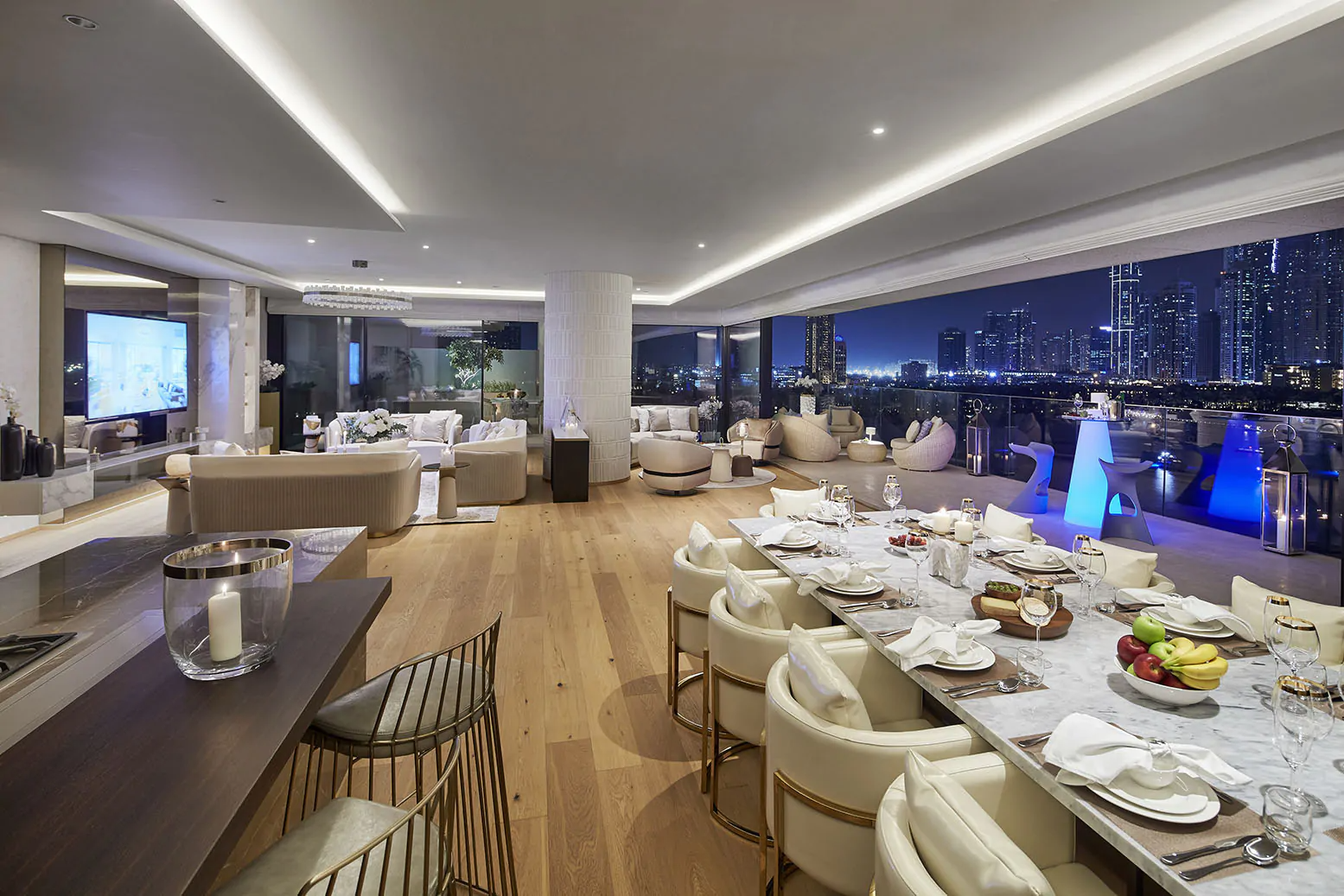
Color plays a significant role in our daily lives, affecting our moods, emotions, and overall well-being. This impact becomes even more apparent when it comes to interior spaces. The colors we choose for our homes, offices, and other living or working areas can have a profound effect on how we feel and behave.
Let’s take a look at some common colors used in interior design and their impact on our psyche.
Warm colors for energy and warmth:
Shades like red, orange, and yellow evoke feelings of warmth and enthusiasm in luxury interior design Dubai. Red is often associated with passion and excitement, making it an excellent choice for dining areas and social spaces. Orange promotes energy and creativity, making it ideal for home offices or workout spaces. Yellow brings a sense of cheerfulness and positivity, working well in kitchens and living rooms.
Cool colors for relaxation and serenity:
Blue, green, and purple are commonly used to create a soothing and tranquil atmosphere. Blue, often linked to calmness and stability, is perfect for bedrooms and bathrooms. Green represents nature and renewal, bringing a refreshing feel to any space. Purple, especially in lighter shades like lavender, adds an element of luxury and relaxation, making it a great option for bedrooms or reading nooks.
Neutral tones for versatility:
Neutral colors like white, grey, and beige provide a timeless and elegant foundation for any interior. These shades allow for flexibility in décor choices, making it easy to update the look of a room without major renovations. They also create a sense of openness and brightness, making them popular in modern and minimalist designs.
The psychological effects of dark Vs. light colors:
Dark colors such as deep blue, charcoal, and black can add sophistication and depth to a space but should be used carefully to avoid making rooms feel too enclosed. Lighter shades, instead, improve natural light and make spaces feel more open and airy. Striking the right balance between dark and light tones ensures a visually appealing and comfortable environment.
Using color to define spaces:
In open-plan layouts, color can be used to separate different areas without the need for walls. For instance, a warm accent wall in a dining area can distinguish it from the adjoining living space, while soft pastel tones in a reading corner can create a cozy retreat.
By carefully selecting colors based on their psychological impact, homeowners can improve the ambiance and functionality of their interiors, a key element in luxury interior design.